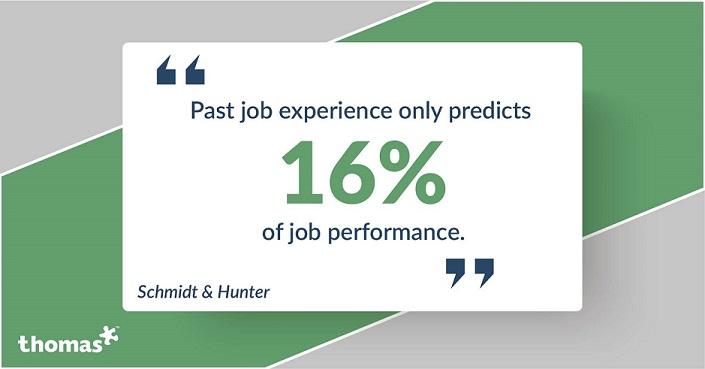As lockdown regulations begin to ease, and businesses look to rebuild, one thing is becoming clear: the world of work as you knew it has changed, perhaps forever. So as the world tries to return to some degree of normality, business leaders will need to reimagine and rebuild their organisation's practices for post-lockdown life - and that's no easy task. After all, rebuilding doesn't just happen overnight.
It’s not just budget adjustments and changing customer expectations that your business will face. With fewer employees, new skills requirements, increased remote working and limited face-to-face interactions for the foreseeable future, everything from business operations to people management will need to evolve.
HR teams, leadership teams and people managers need to focus on employee wellbeing. You will need to consider the challenges employees face with engagement and motivation after being furloughed or working with reduced pay and/or reduced hours. Change often engenders conflict and many employees will struggle to adapt to the current stream of changes that are required of them.
It’s likely the recent changes will also have resulted in alterations to your operating model and supporting infrastructure, which in turn may have highlighted significant capability gaps. The repurposing or recruiting of the right employees and skillsets into your restructured teams to address these gaps, will be paramount and will need to be done rapidly, remotely and successfully. It is with the right people in the right roles that you will be able to rebuild and renew business performance with confidence.
Ultimately, while leadership will need to adapt and respond quickly to these changing needs, your people will be the beating heart of your recovery and will define your ultimate success. A focus on effective communication, transparency on the changes required, support for your returning employees and rapid securing of the right new people and skills in to your business, is paramount as you return, rebuild and renew your businesses to thrive as the economy reshapes.
In this blog, we will look at the five biggest challenges your business is likely to face along the way:
1. Operational Resilience
Operational resilience is the ability to withstand operational shocks and continue to deliver your core business offering. Transitioning from managing a crisis to a modified version of business as usual can be challenging. Employees need to have full confidence that the leadership of the business is moving them and the organisation in the right direction, at the right time and that they have the safety and well-being of their employees front of mind.
Reactivating business operations means reactivating your workforce. Identifying and prioritising which members of staff will return from furlough, leave or work from home and then communicating decisions and underlying reasons in a transparent and honest way is key during any period of change. For the large majority of businesses, this will mean remote working becoming the new normal. That’s why it’s essential to take the necessary steps to manage remote working effectively, not just at the point of crisis but for the long-term.
Some processes will need to change or stop, and new processes put in their place. Roles have most likely been modified over recent weeks and will again as businesses ramp back up their operations. This will highlight capability gaps and the need to develop employees’ skillsets further. Identifying and addressing these gaps will be critical to making teams more productive fast.
Read our blog Communicating from a Distance: How to ensure remote working works best for your organisation.
2. Rapid and remote recruitment
In order to fill capability gaps and make your teams productive as so as possible, there will be a need to recruit rapidly, remotely and with confidence.
Even before the COVID-19 crisis, digital recruiting was increasing in popularity. According to a recent survey, 70% of hiring managers have successfully hired with social media.
And in the wake of the pandemic, more firms than ever will turn to it. With social distancing measures and remote working likely to continue, face-to-face interactions will be limited. But although social recruitment is a useful tool, you must use it effectively.
You need to ensure that your digital recruitment is targeted, strategic and most importantly, human. Cross-company collaboration between recruiters, hiring managers and marketers will be essential to create engaging content that will help to grow your talent pool. Remote recruitment needs to be supported by comprehensive candidate assessment technology to truly understand behaviours, derailers and aptitude outside of the CV and to understand their fit with the team.

With the added complication of recruiting without potentially meeting the candidates face to face, you need to be able to create a robust process that covers the other 84% not covered the CV. One factor that does work in favour of employers, is that you can now pull from a wider, national talent pool, not just the local talent pool, as remote working is seen as more socially responsible and has been proven to be effective.
The cost of making the wrong decision with regards to recruitment has never been higher. In recent times, countries in Asia have been addressing capability gaps by using contractors in order to mitigate the risk of making the wrong decision, but with a thorough recruitment process backed by science, you can recruit with confidence.
Read our blog on the High cost of selecting the wrong talent.
3. Increased staff conflict
Estimates from HMRC suggest nearly 6.3 million Britons have been placed on temporary leave, or have been furloughed. And according to the International Labour Organisation (ILO), more than four out of five people, 81%, in the global workforce of 3.3 billion are currently affected by full or partial workplace closures.
And as staff members begin to come off furlough, temporary leave, redundancy or partial closures, the transition back into normal working life will not be smooth. Change often engenders conflict, and some employees may struggle because they think they’re expendable.
Meanwhile, you may find that new conflicts will arise from those returning to jobs that have been temporarily covered by someone else.
So, it’s more important than ever to proactively invest in methods of conflict resolution. The ability to successfully tackle a tough conversation stems from our emotional intelligence; how aware we are of our own emotions and our ability to manage them and express them in an appropriate manner; coupled with the ability to recognize emotions in others and not respond negatively. Emotional intelligence can be learned and a higher level of self-awareness, combined with a desire to become more adept at managing our own and others’ emotions, is well worth the time investment.
Check out our Tackling Tough Conversations whitepaper.
4. Employee engagement & motivation
In times of uncertainty, employees who feel isolated – whether they’re working remotely or on temporary leave – will have lower levels of motivation, engagement and productivity.
Following a return to more normal working conditions, you’ll need to assess how you communicated with your team during the crisis. Companies that actively engaged in high-value interactions will have built trust with their employees, ensuring higher levels of engagement. Those that haven’t may need to re-build from the ground up.

Plus, some individuals thrive in a remote working environment, whilst others seem to struggle to stay motivated. Understanding individual differences can help managers and team members keep each other engaged, enthusiastic and focused when working from home. According to Ian MacRae, test author of the High Potential Trait Indicator (HPTI) and Head of Workplace Psychology at Clear Review, “if we manage individuals effectively and tailor our management strategies to their needs, remote working has the potential to boost employee engagement as well as performance”. Ensuring current and future employees have everything they need for remote working as well as creating strategies to adapt to situations of uncertainty, can help with engagement and motivation.
One way forward is to look for leaders with higher emotional intelligence. Empathy, compassion and great interpersonal skills count for a lot right now. By developing these qualities in leaders, you’ll increase staff collaboration and, ultimately, engagement.
Read our blog Do emotionally intelligent leaders have more engaged staff?
5. Commercial resilience
Commercial resilience is the ability to respond to changing market and consumer pressures. Customer behaviours have changed in ways that we have never seen before. The demand for products and services has changed and so should the way that your employees respond to them. Capturing, understanding and meeting the change in customer behaviours and demands when the patterns are highly uncertain will be a challenge, and you need to make sure that your workforce is trained in understanding and interpreting these changes. Creating human connections is a real problem with limited face to face meetings in the foreseeable future, so how can you develop and train your staff to create these connections?
You need to ensure you have high-performing teams and individuals. The benefits include having a broad range of talents and skill-sets as well as a group of innovative thinkers with their own ideas and suggestions that can be more effective. To develop a high performing team, you need open communication, clear objectives and opportunities for development. Do you know the strengths of each person within the team and what they can improve on? To remain competitive, you’ll need to be able to react and pivot to changes quickly and comfortably, while maintaining effective communication between employees and customers. The key to this? Develop a change management strategy with your people at the centre.
Conclusion
In this new world of work, it’s difficult to see where and when the next obstacle will be. We’re living in a time of unprecedented disruption and pulling your team through will be no easy task.
So how do you handle the transition into post-lockdown working?
It’s undeniable – the COVID-19 crisis will impact how we work profoundly. But that doesn’t have to be a negative thing. Deal with these challenges head on, and you could unlock new efficiencies, new levels of collaboration, and new growth.
So, what are the best ways to handle the transition? Speak to one of our experts today to understand how our talent assessment solutions are already helping businesses likes yours to meet the current challenges of remote working, change management, conflict resolution and rapid recruitment.
And check out our next blog coming soon, where we’ll offer practical advice and expert tips for managing the changes needed to navigate the calming of the storm.



